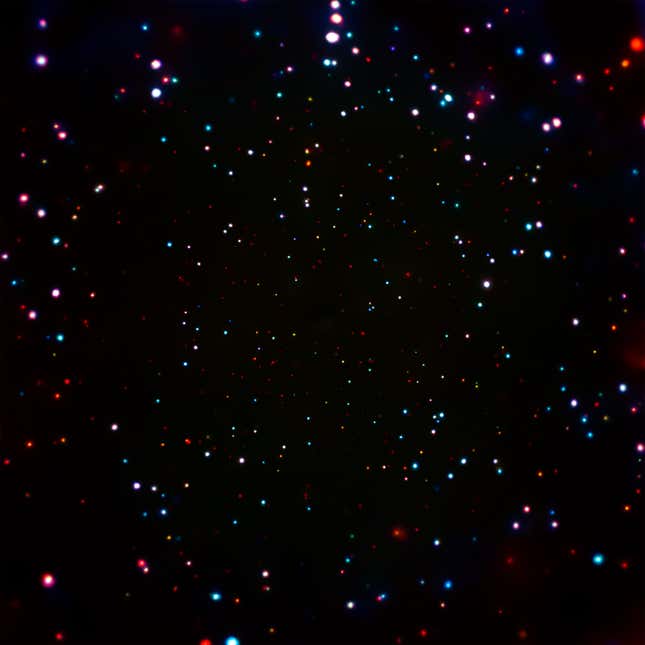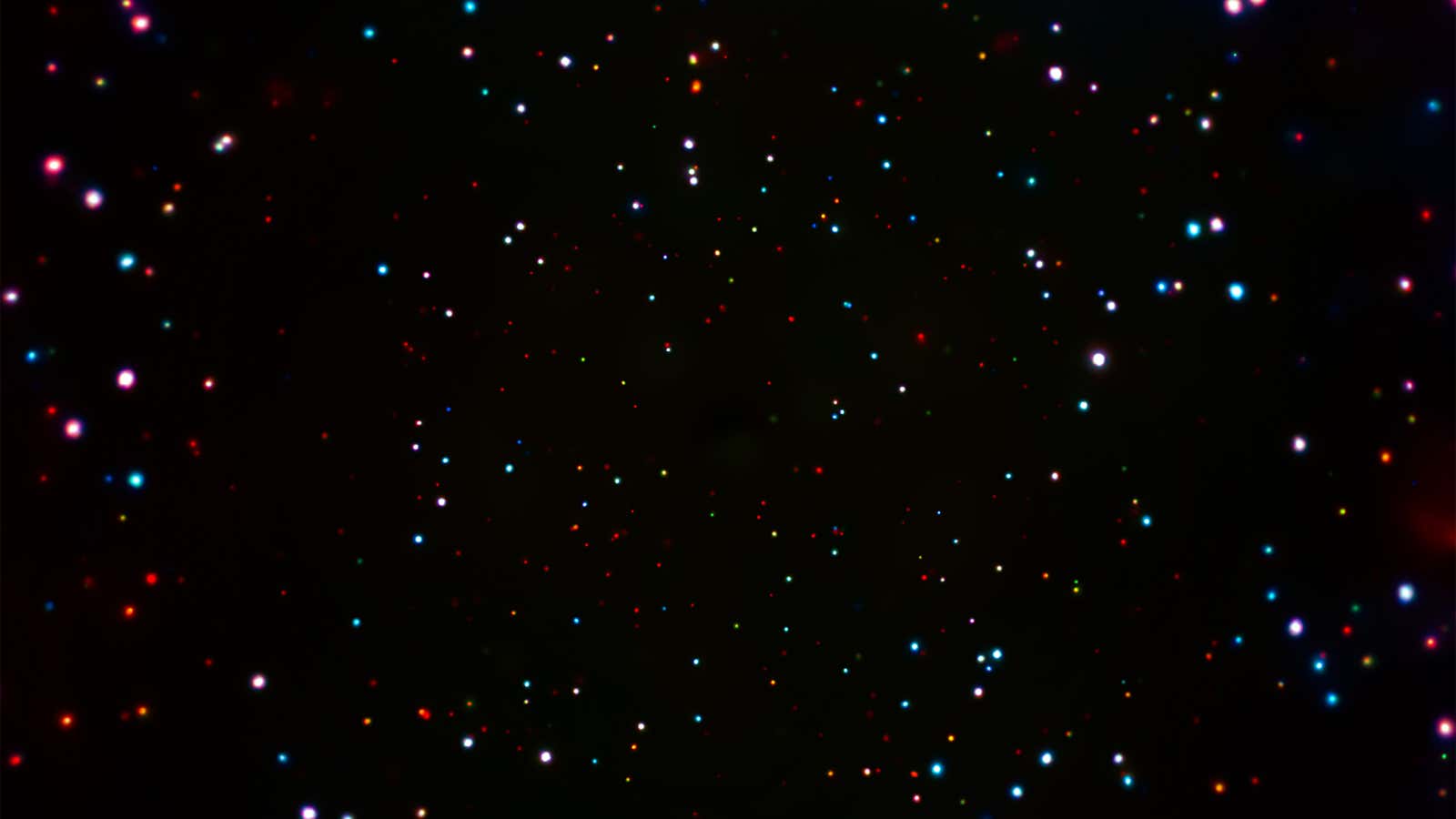You can’t see a black hole with naked eyes, but NASA has eyes in the sky that can see in the deepest, darkest regions of the light spectrum.
And that’s exactly what Chandra, NASA’s space observatory, has captured. Using X-rays, the space agency photographed the highest concentration of black holes ever seen. The photo, released on Jan. 5, shows but a mere sliver of the sky, revealing hundreds of black holes. But if the region captured were the size of the moon as seen from the Earth, it would contain 5,000 supermassive black holes, each of which may range in mass from 100,000 times to 10 billion times the mass of our sun.
“With this one amazing picture, we can explore the earliest days of black holes in the Universe and see how they change over billions of years,” said Niel Brandt of Pennsylvania State University in University Park.

About 70% objects visible in the image are supermassive black holes. The gas falling in toward the black holes becomes so hot that it produces bright X-rays, which Chandra’s sensors captured.
“It can be very difficult to detect black holes in the early Universe,” said Bin Luo of Nanjing University in China. “But by staring long enough with Chandra, we can find and study large numbers of growing black holes, some of which appear not long after the Big Bang.”
The black holes are located between 12 billion and 13 billion light years away from the Earth. Detecting X-rays from distant galaxies helps astronomers learn more about “the formation and evolution of stellar-mass and supermassive black holes in the early Universe,” said Fabio Vito of Pennsylvania State University. “We’re looking back to times when black holes were in crucial phases of growth, similar to hungry infants and adolescents.”
